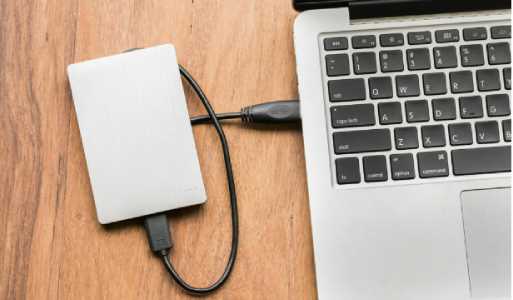Facing issues with a laptop not recognizing a connected external hard drive can be frustrating, but there are several steps you can take to troubleshoot and potentially resolve the problem. Here's a comprehensive guide to help you navigate through this issue:

Check Physical Connections: Ensure that the external hard drive is properly connected to the laptop. Use a different USB port to rule out a faulty port or cable. If possible, try a different cable to ensure it's not the culprit.
Power Cycle the External Hard Drive: Turn off the external hard drive, disconnect it from the laptop, wait for a few seconds, and then reconnect and power it back on. This simple power cycle can address minor glitches and reinitialize the connection.
Check for Drive Recognition in Disk Management (Windows) or Disk Utility (Mac): On Windows, right-click on the Start button, select "Disk Management," and check if the external drive is listed. To access Disk Utility on Mac, navigate to the Utilities folder within the Applications directory. If the drive appears, it might need to be initialized or formatted.
Try on Another Computer: Plug the external hard drive into another computer to check for recognition. This helps determine whether the issue is with the laptop or the external drive. If the drive works on another computer, the problem may be laptop-specific.
Update USB Drivers: Make sure the USB drivers on your laptop are current. Outdated drivers can lead to compatibility issues. Visit the laptop manufacturer's website or the USB controller manufacturer's site to download and install the latest drivers.
Check for USB Hub Issues: If you're using a USB hub, connect the external hard drive directly to the laptop's USB port. Some USB hubs may not provide enough power or cause connectivity problems.
Test with Another Cable: Cables can be a common point of failure. Try using a different USB cable to connect the external hard drive to your laptop. This can help rule out cable issues.
Inspect for Physical Damage: Examine the external hard drive and its cable for any physical damage. Bent pins, frayed cables, or other visible issues could be causing the problem.
Check Device Manager (Windows) or System Information (Mac): In Windows, open Device Manager and look for any yellow exclamation marks or errors next to USB devices. On Mac, check System Information for information about connected USB devices. Resolve any issues indicated.
Run Disk Check/Repair: On Windows, open Command Prompt and run "chkdsk /f" on the external drive letter. On Mac, use Disk Utility to run First Aid on the drive. This can identify and fix potential disk errors.
Update Operating System: Make certain that your laptop's operating system is current, as updates may contain solutions for USB connectivity issues. Check for available updates and install them as needed.
Try Another Operating System: Boot your laptop using a different operating system (e.g., a live Linux USB) to see if the external hard drive is recognized. This helps determine if the issue is software-related within your current operating system.
Reinstall USB Controllers: In Device Manager (Windows), uninstall USB controllers, then restart your laptop. The system will reinstall the controllers, potentially resolving any driver-related issues.
Contact Manufacturer Support: If all else fails, reach out to the manufacturer's support for your laptop or the external hard drive. They may provide specific guidance based on your device and its compatibility.
By following these steps, you can systematically troubleshoot and address the issue of a laptop not recognizing a connected external hard drive. If the problem persists, contacting technical support for personalized assistance is recommended.